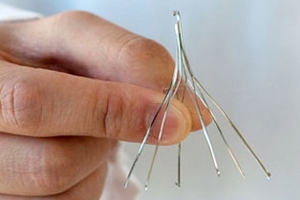Research conducted in 2016 has revealed possible causes of IVC Filter breakage. Surgeons insert IVC Filters (small metal medical devices) in a vein called the inferior vena cava to prevent pulmonary embolisms (life-threatening blood clots in the lung). IVC Filters, also known as IVC Blood Clot Filters, work by blocking the passage of blood clots through a patient’s IVC vein to the lung.
Although IVC Filters are intended to save patients’ lives, they frequently cause serious injury or wrongful death. Most of the complications suffered by patients who receive IVC Filters result from IVC Filter breakage inside the patient’s body. When pieces of an IVC Blood Clot Filter break off or splinter, they can puncture the patient’s IVC vein. The pieces can also migrate to and pierce a patient’s brain, heart, or lung. These injuries can lead to:
- heart attack or stroke
- internal bleeding
- blood flow problems such as cardiac tamponade
- nerve injury and infections
- death
FDA Warnings for Removable IVC Filters
IVC Blood Clot Filters may be permanent or removable. Removable IVC Filters (also known as retrievable or temporary IVC Filters) are the IVC Filters most likely to splinter. IVC Filter manufacturers were aware as early as 2004 of the injuries caused by retrievable IVC Filter breakage.
In 2010, more than 900 reports of Bard IVC Filter breakage causing injuries to patients’ hearts and lungs were sent to the FDA. The FDA advised doctors, in 2010, to remove IVC Filters when patients are no longer at risk of pulmonary embolism. In 2014, the FDA advised that temporary filters be removed within 29 to 54 days of insertion. In 2015, the FDA warned that the risk of IVC Filter breakage and resultant injuries increases the longer an IVC Filter stays inside a patient.
Retrievable IVC Filter Breakage
Studies have shown that IVC Filter breakage occurs with 31 percent of retrievable IVC Filters and that 40 percent will break within 5 ½ years. Recent research, conducted in 2016, provides some insight into the possible causes of IVC Filter breakage.
The research involved the study of a patient who suffered injuries from IVC Filter breakage. Radiologists at the Baylor University Medical Center found that two sections of a retrievable IVC Filter that had been left in the patient’s body for over 6 years had broken and pierced the patient’s IVC vein. The filter itself had also moved from its original position during this period.
The radiologists’ analysis of the IVC Filter breakage, through electron microscopy, showed that the patient’s IVC vein had flattened and “foreshortened.” The researchers surmised that this had led to IVC Filter breakage from:
- metal fatigue due to accumulated damage, or
- metal overload due to acute stress
This research strengthens previous data on IVC Blood Clot Filter defects and IVC Filter breakage. It also emphasizes the crucial need for removal of retrievable IVC Filters as soon as they are no longer required.
IVC Filter Breakage Lawsuits
Plaintiffs have filed law suits seeking compensation for IVC Filter injuries and wrongful deaths across the nation. These legal actions allege that the manufacturers of retrievable IVC Filters:
- knew of the dangers of IVC Filter breakage
- manufactured and marketed a defective and dangerous product
- failed to adequately warn and instruct the public and physicians of the risks associated with temporary IVC Filters
In some cases, plaintiffs have also brought actions against doctors who negligently failed to remove patients’ IVC Filters before IVC Filter breakage and resulting injury occurred.
The Philadelphia Blood Clot IVC Filter Injury Lawyers at Feldman & Pinto are evaluating cases involving injuries and deaths from IVC Filter breakage and migration. If you or one of your family members sustained injuries from an IVC Filter, please contact us for a free evaluation of your case.



